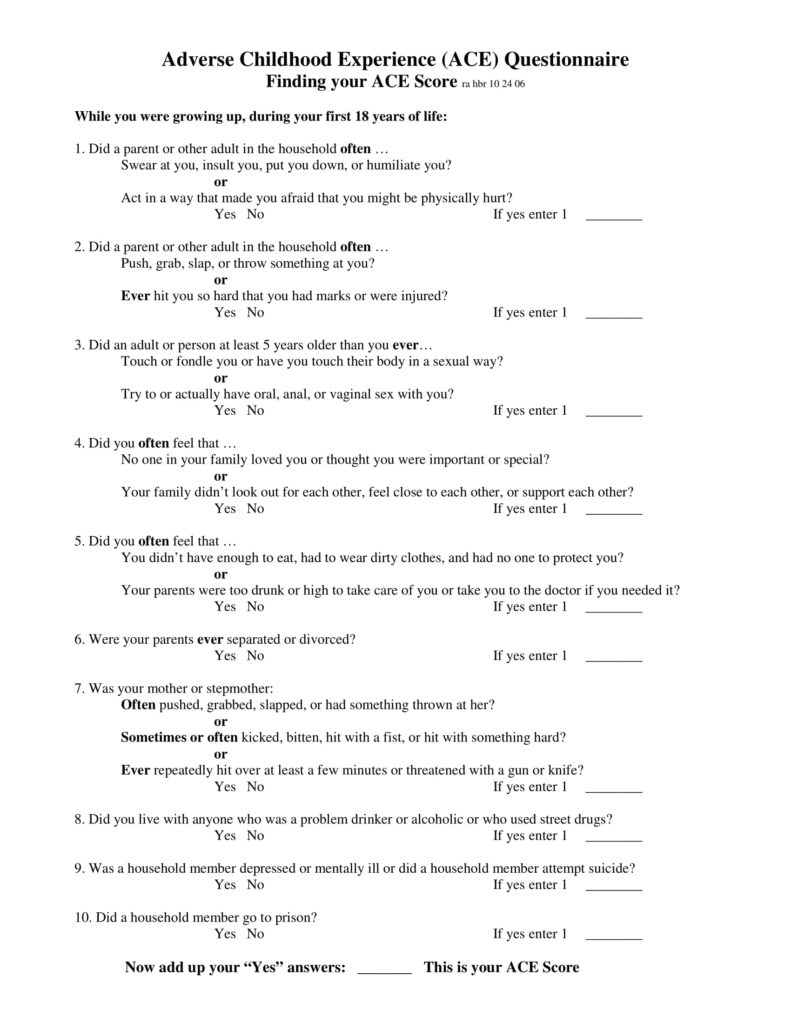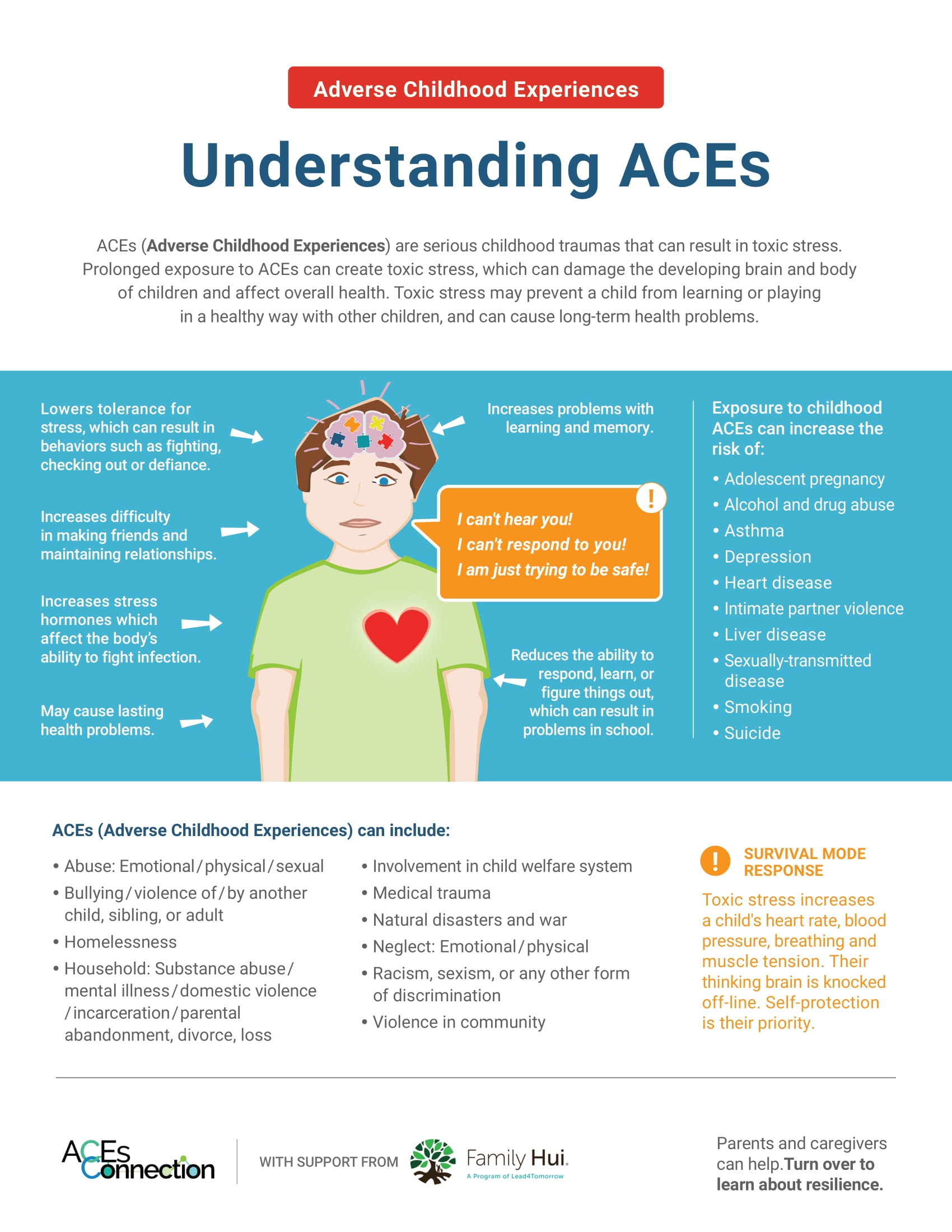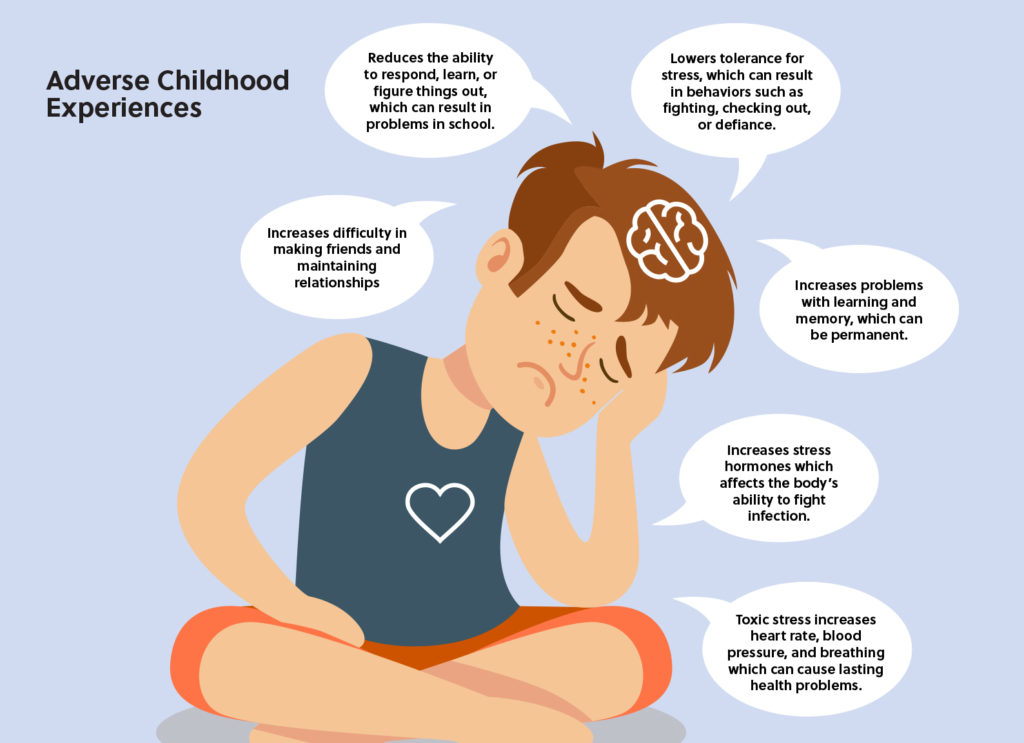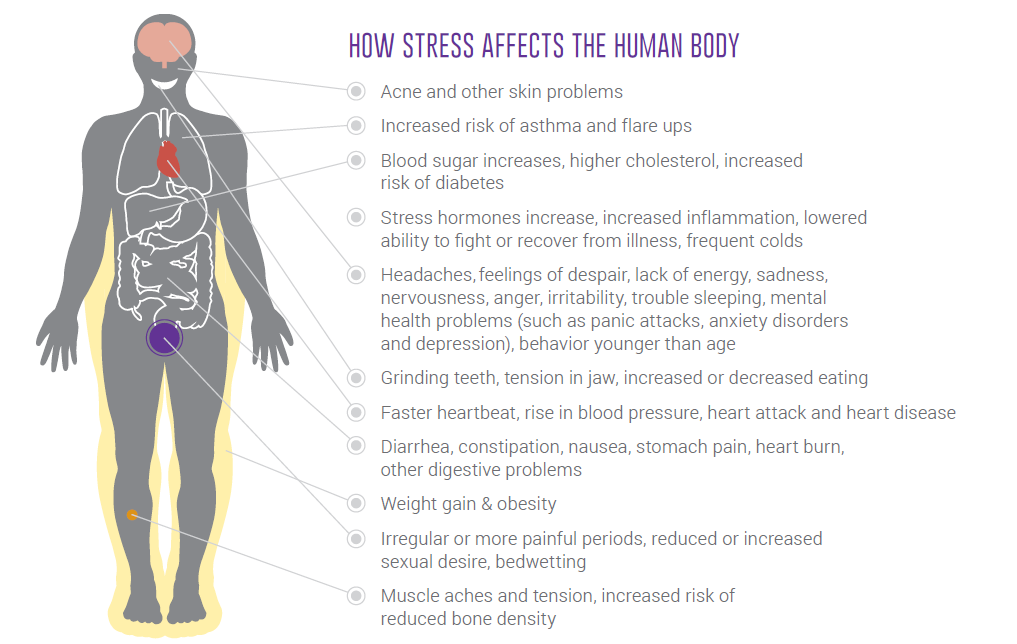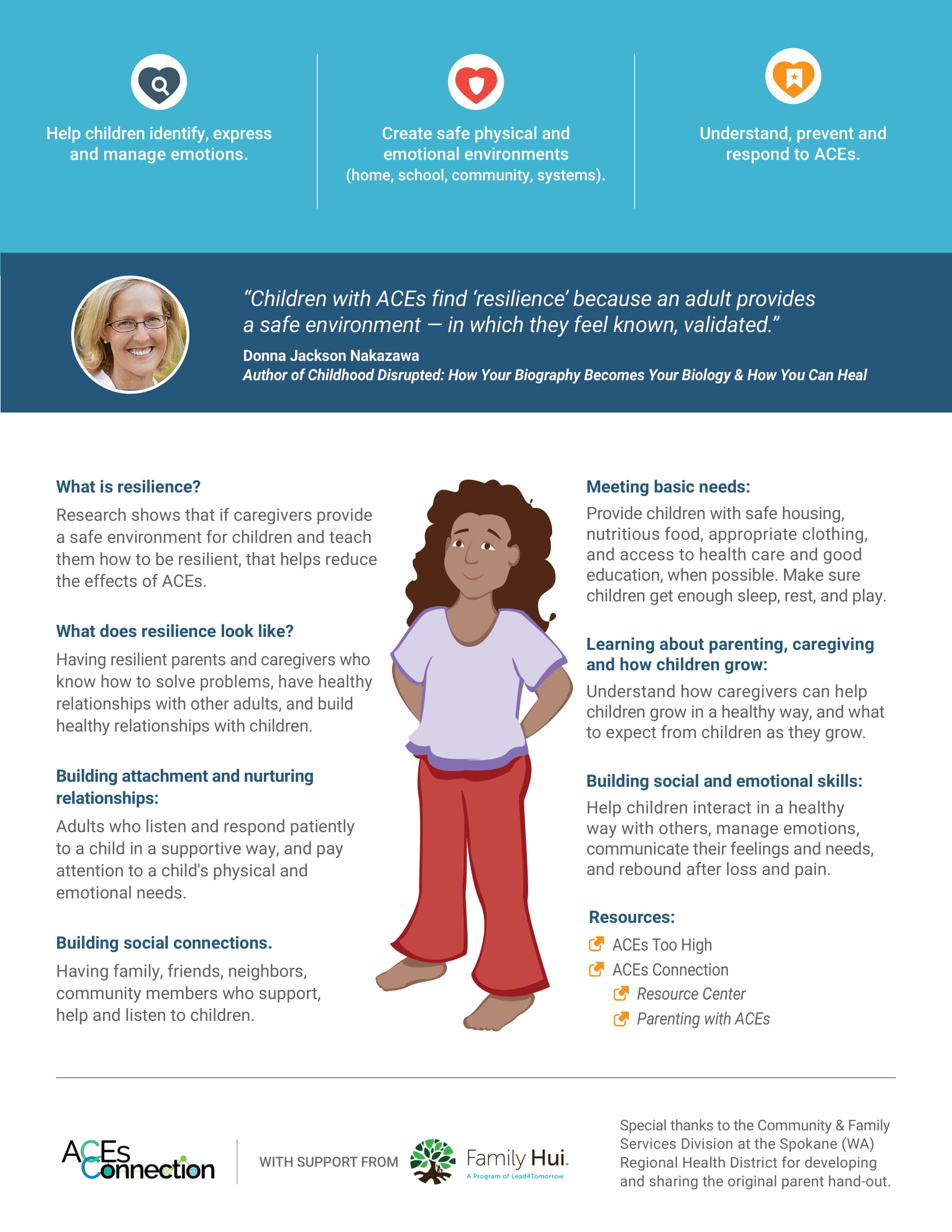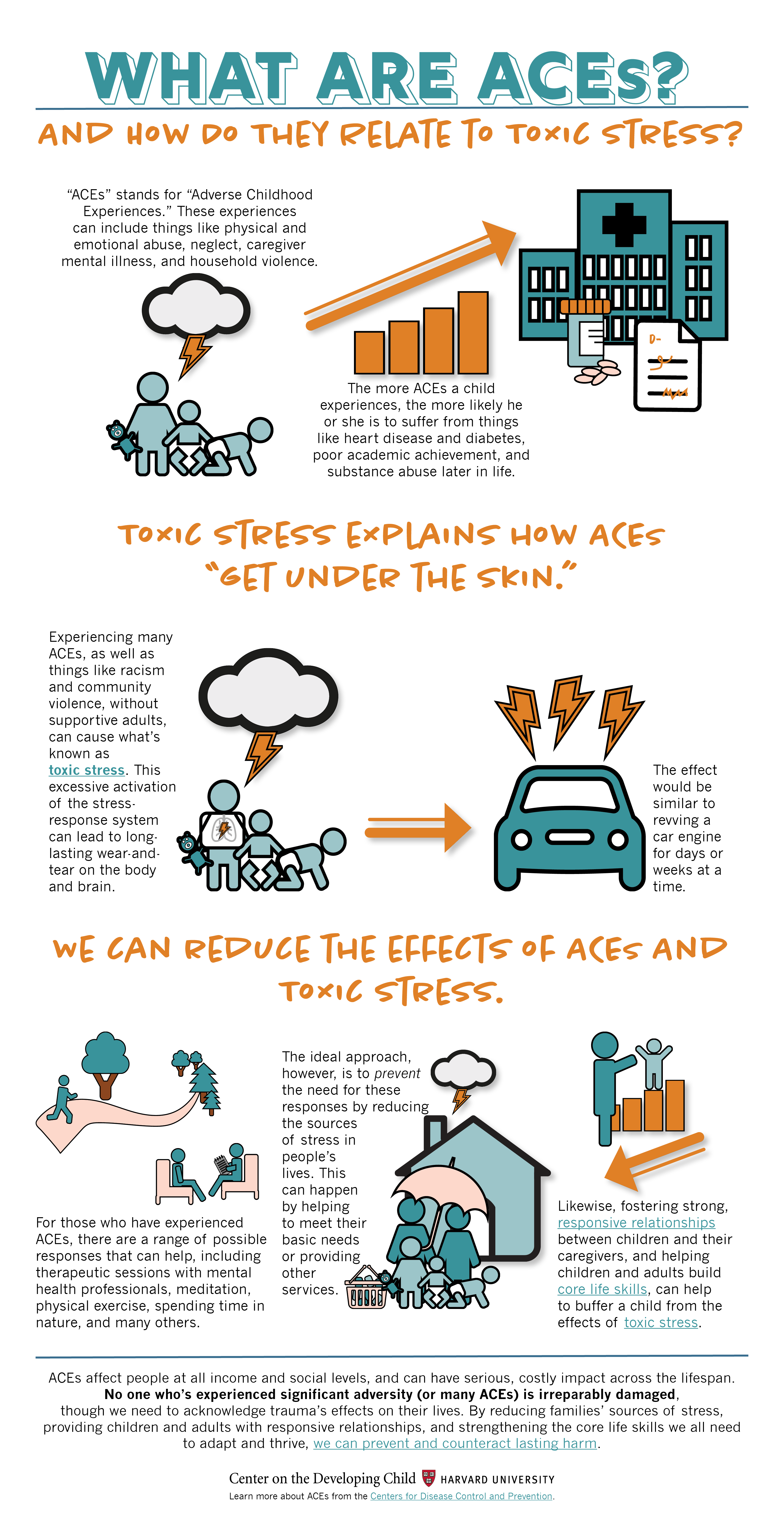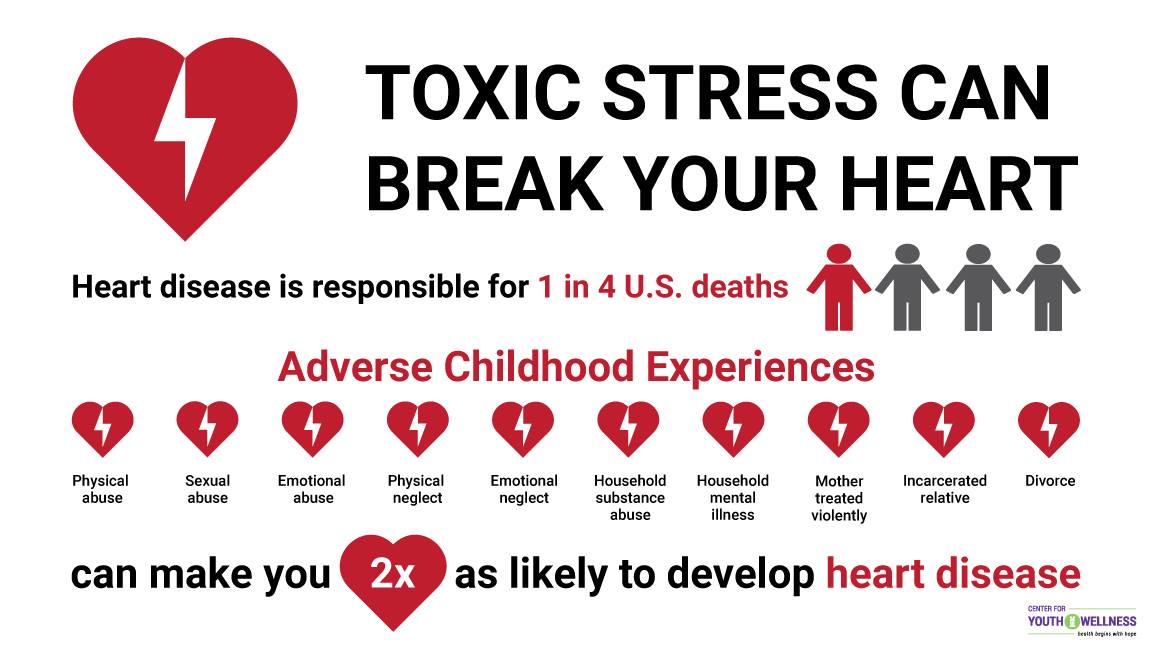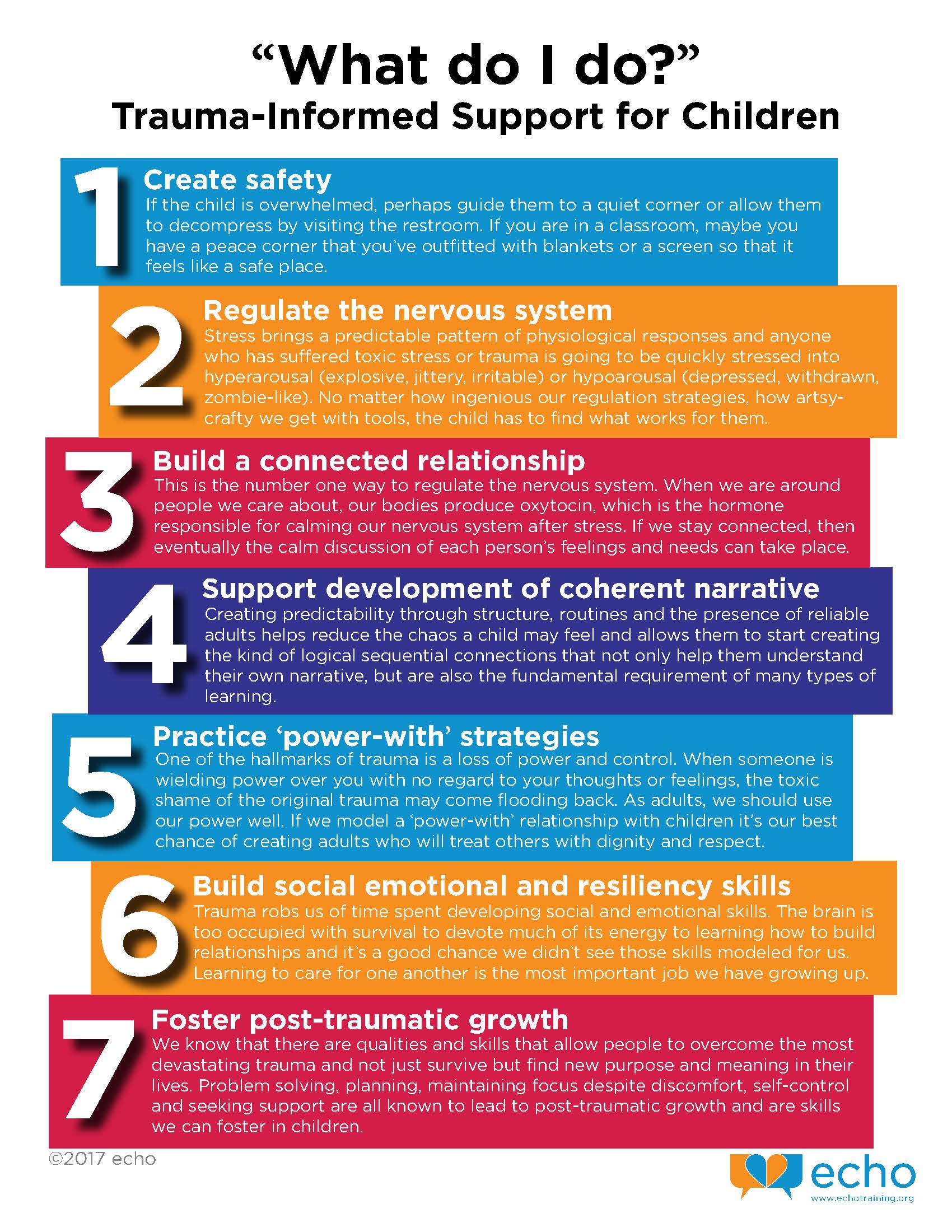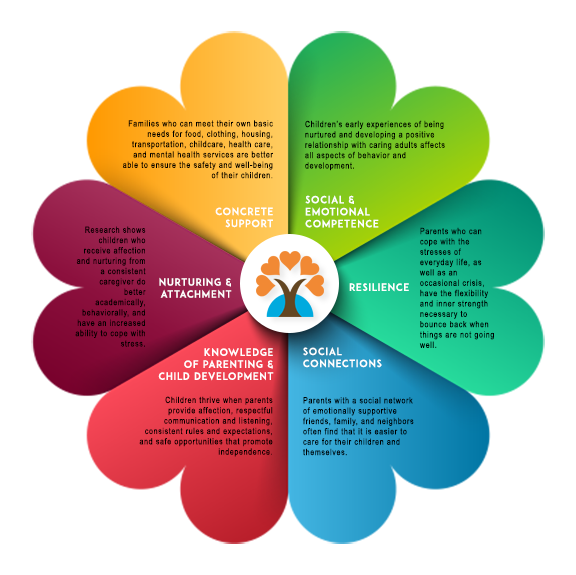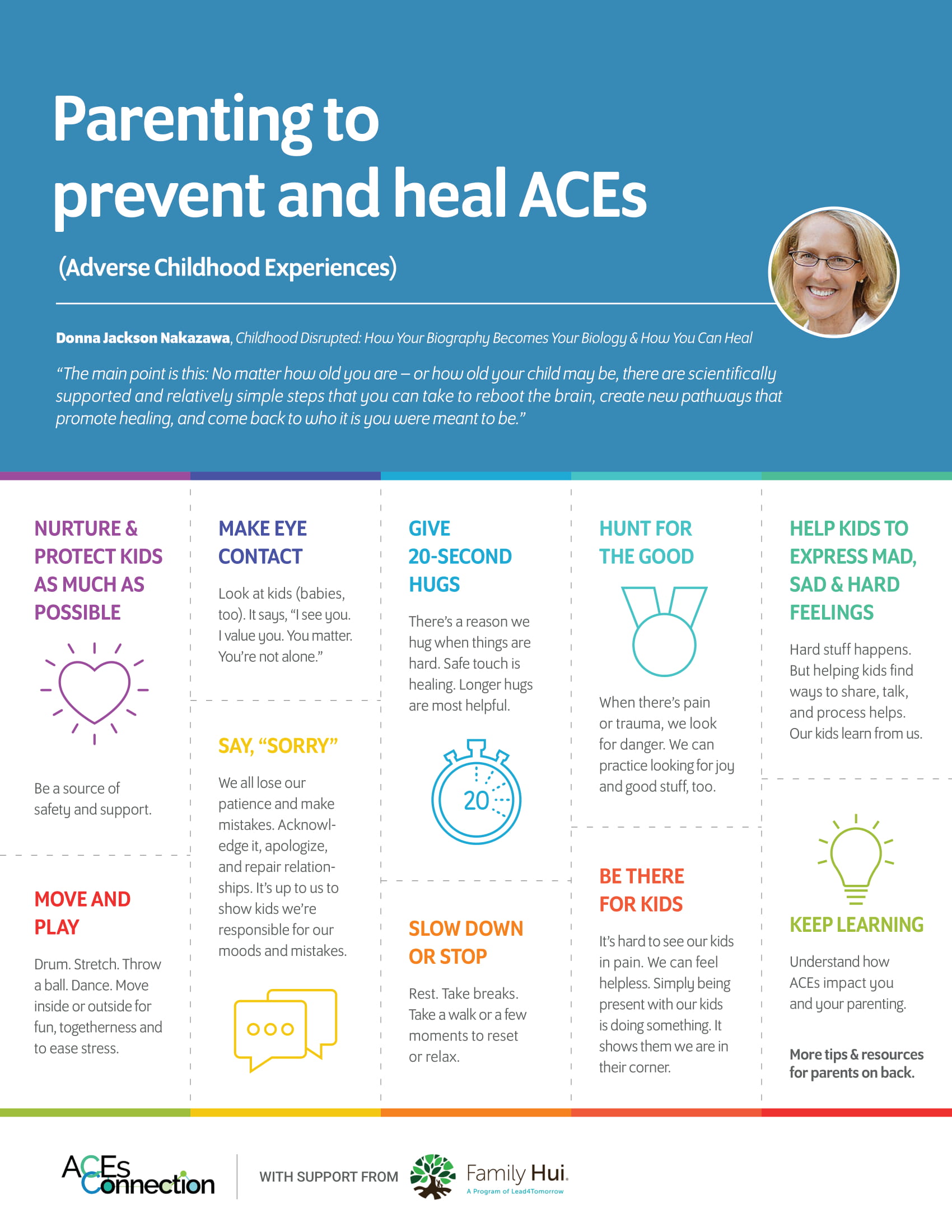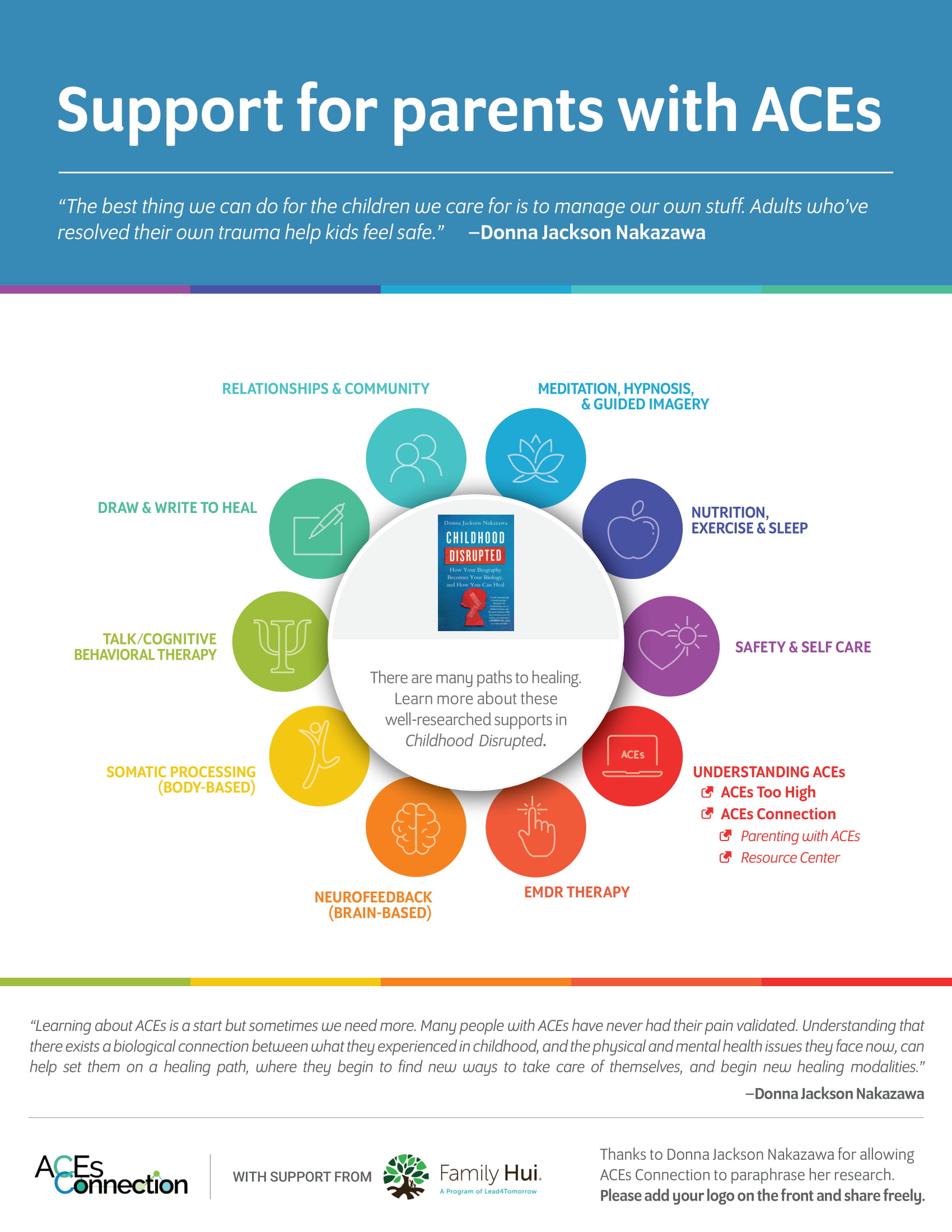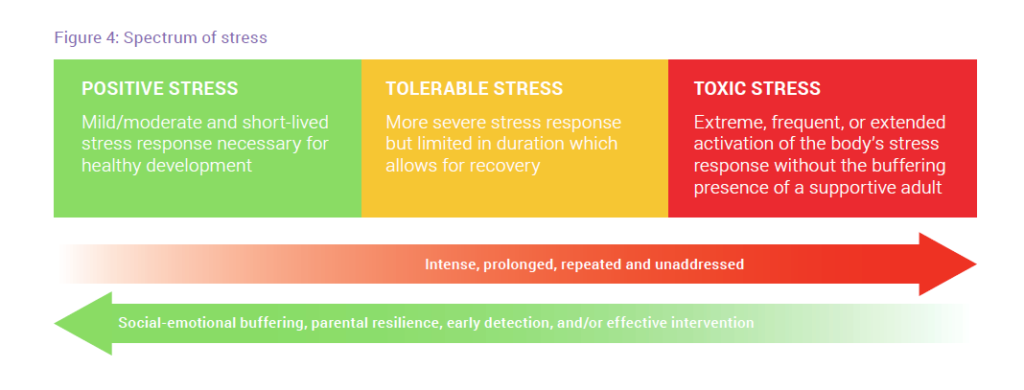
ADVERSE CHILDHOOD EXPERIENCES (ACEs)
What Are ACEs?
Adverse childhood experiences (ACEs) are traumatic events occurring before age 18. ACEs include all types of abuse and neglect as well as parental mental illness, substance use, divorce, incarceration, and domestic violence. A landmark study in the 1990s found a significant relationship between the number of ACEs a person experienced and a variety of negative outcomes in adulthood, including poor physical and mental health, substance abuse, and risky behaviors.1 The more ACEs experienced, the greater the risk for these outcomes. By definition, children in the child welfare system have suffered at least one ACE. Recent studies have shown that, in comparison to the general population, these children are far more likely to have experienced at least four ACEs (42 percent vs. 12.5 percent).2
How Can This Information Help Children?
Research about the lifelong impact of ACEs underscores the urgency of prevention activities to protect children from these and other early traumas. When children do experience trauma, understanding the impact of ACEs can lead to more trauma-informed interventions that help to mitigate negative outcomes. Many communities are now exploring how a focus on reducing ACEs can help prevent child maltreatment, produce healthier outcomes for children and families, and save costs down the road. *Source: Childwelfare.gov
How do ACEs relate to toxic stress?
ACEs research shows the correlation between early adversity and poor outcomes later in life. Toxic stress explains how ACEs ”get under the skin” and trigger biological reactions that lead to those outcomes. In the early 2000s, the National Scientific Council on the Developing Child coined the term “toxic stress” to describe extensive, scientific knowledge about the effects of excessive activation of stress response systems on a child’s developing brain, as well as the immune system, metabolic regulatory systems, and cardiovascular system. Experiencing ACEs triggers all of these interacting stress response systems. When a child experiences multiple ACEs over time—especially without supportive relationships with adults to provide buffering protection—the experiences will trigger an excessive and long-lasting stress response, which can have a wear-and-tear effect on the body, like revving a car engine for days or weeks at a time.
Importantly, the Council also expanded its definition of adversity beyond the categories that were the focus of the initial ACE study to include community and systemic causes—such as violence in the child’s community and experiences with racism and chronic poverty—because the body’s stress response does not distinguish between overt threats from inside or outside the home environment, it just recognizes when there is a threat, and goes on high alert.
What is trauma, and how does it connect to ACEs and toxic stress?
While trauma has many definitions, typically in psychology it refers to an experience of serious adversity or terror—or the emotional or psychological response to that experience. Trauma-informed care or services are characterized by an understanding that problematic behaviors may need to be treated as a result of the ACEs or other traumatic experiences someone has had, as opposed to addressing them as simply willful and/or punishable actions.
*Source: Center on the Developing Child-Harvard University
Find Out Your Score
Resources
About Adverse Childhood Experiences
Centers for Disease Control and Prevention
Provides an overview of adverse childhood experiences.
Adverse Childhood Experiences: Looking at How ACEs Affect Our Lives & Society [Infographic]
Centers for Disease Control and Prevention
Discusses the types of ACEs, their prevalence, their effects on physical and mental health and society, and strategies to address them.
Essentials for Childhood Framework: Steps to Create Safe, Stable, Nurturing Relationships and Environments for All Children
Centers for Disease Control and Prevention (2019)
Explains a strategic approach to building strong communities that support positive child and family development. The goals of the approach include raising awareness, making data-driven decisions, promoting positive norms, and assessing policies that impact families.
Preventing Adverse Childhood Experiences
Center for Disease Control and Prevention
Provides two learning modules to help participants understand, recognize, and prevent adverse childhood experiences (ACES). This training is available to anyone interested in learning more about ACES regardless of profession or educational attainment.
Preventing Adverse Childhood Experiences (ACEs): Leveraging the Best Available Evidence (PDF – 3,697 KB)
Centers for Disease Control and Prevention
Explains what ACEs are, strategies to prevent them from occurring, and the role of public health and evaluation the implementation of ACEs programming.
Preventing Child Abuse and Neglect: A Technical Package for Policy, Norm, and Programmatic Activities (PDF – 3,994 KB)
Fortson, Klevens, Merrick, Gilbert, & Alexander (2016)
Centers for Disease Control and Prevention
Presents specific strategies to prevent child abuse from occurring and approaches to reduce the immediate and long-term effects of child abuse and neglect. The package offers information to inform policies at the community and state levels.
Research Review: New Data on ACES (opens in new window)
(opens in new window)
Prevent Child Abuse America (2019)
Explores emerging research on adverse childhood experiences (ACEs), including interventions to address the consequences of ACEs, and examines key areas of limitation associated with the current ACEs framework.
Responding to ACEs With HOPE: Health Outcomes From Positive Experiences (opens in new window)
(opens in new window)
Sege & Browne (2017)
Frameworks and Measurement, 17
Presents the HOPE: Health Outcomes From Positive Experiences framework, which promotes positive childhood experiences for healthy development and well-being as a mitigator for adverse childhood experiences (ACEs).
1Centers for Disease Control and Prevention. (2016). About the CDC-Kaiser ACE study: Major findings. Retrieved from https://www.cdc.gov/violenceprevention/acestudy/about.html.
2ACEs in young children involved in the child welfare system. Retrieved from http://www.flcourts.org/core/fileparse.php/517/urlt/ACEsInYoungChildrenInvolvedInTheChildWelfareSystem.pdf (opens in new window); Centers for Disease Control and Prevention. (2016). About the CDC-Kaiser ACE study: Data and statistics. Retrieved from https://www.cdc.gov/violenceprevention/acestudy/about.html.
(opens in new window); Centers for Disease Control and Prevention. (2016). About the CDC-Kaiser ACE study: Data and statistics. Retrieved from https://www.cdc.gov/violenceprevention/acestudy/about.html.


